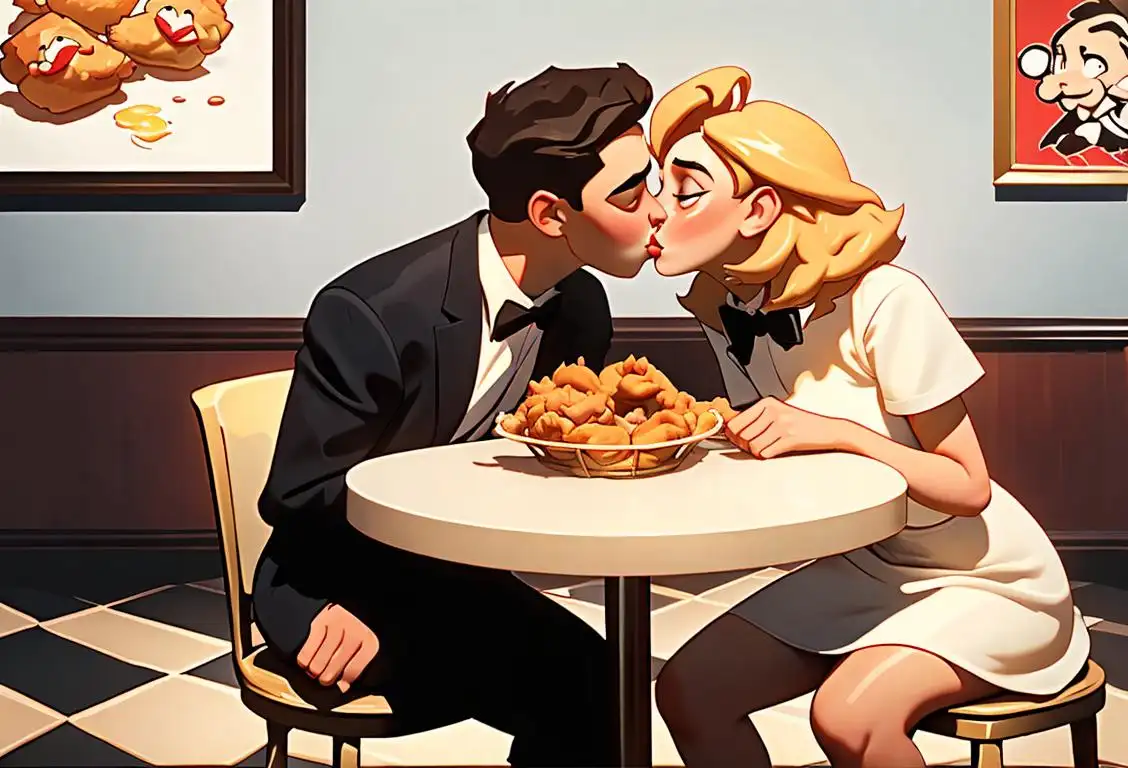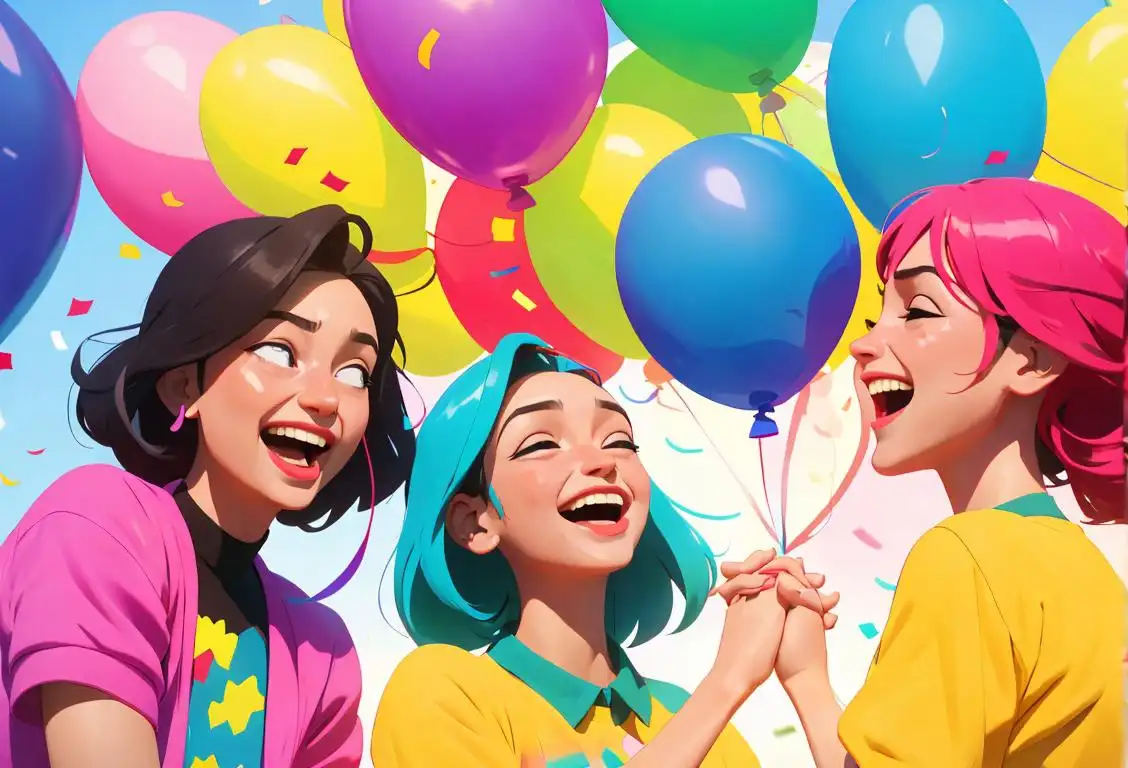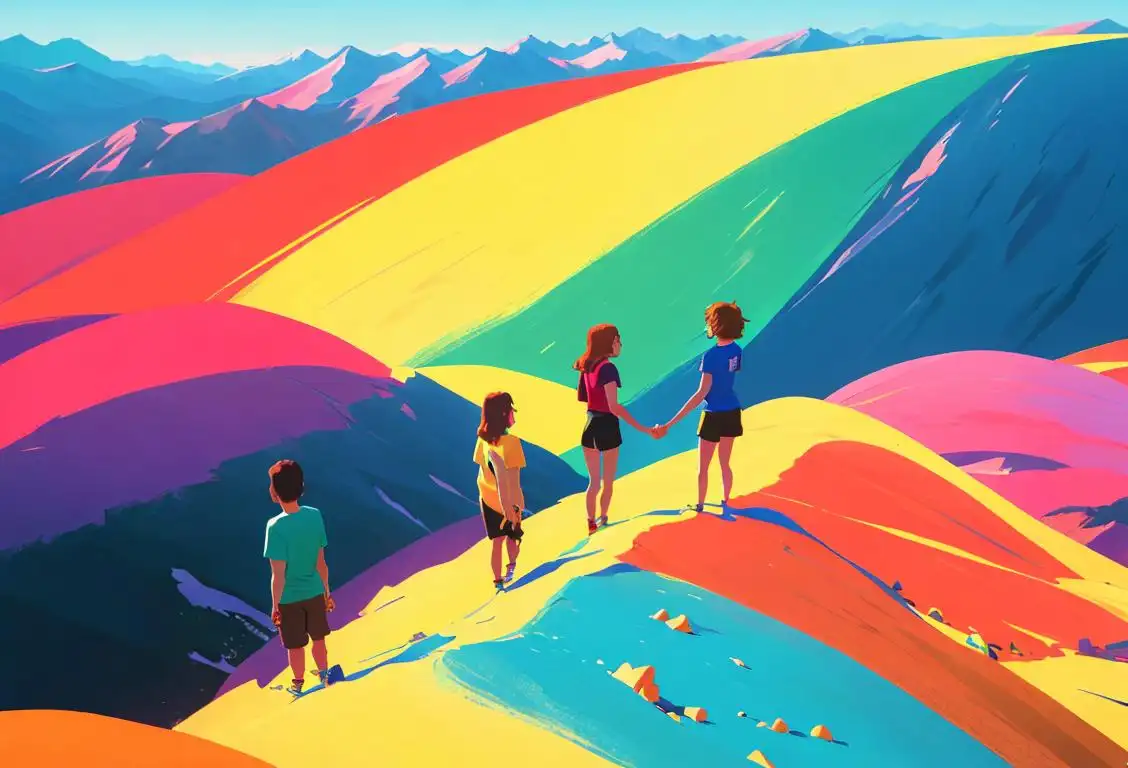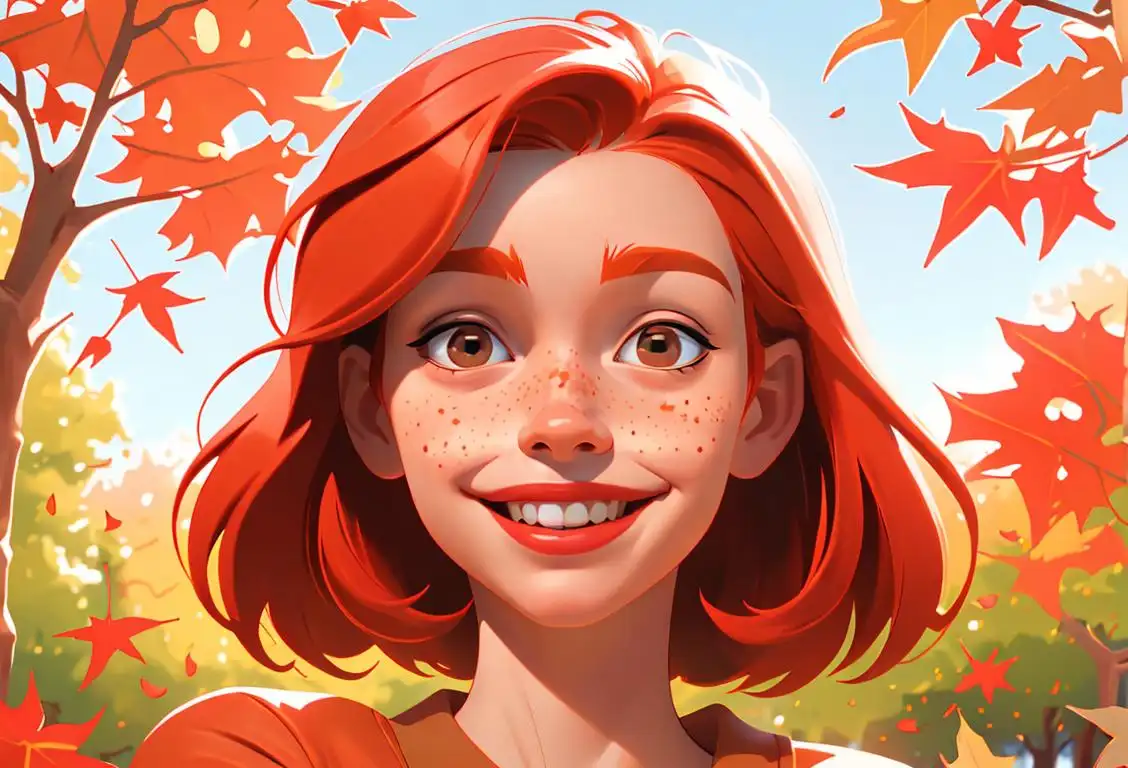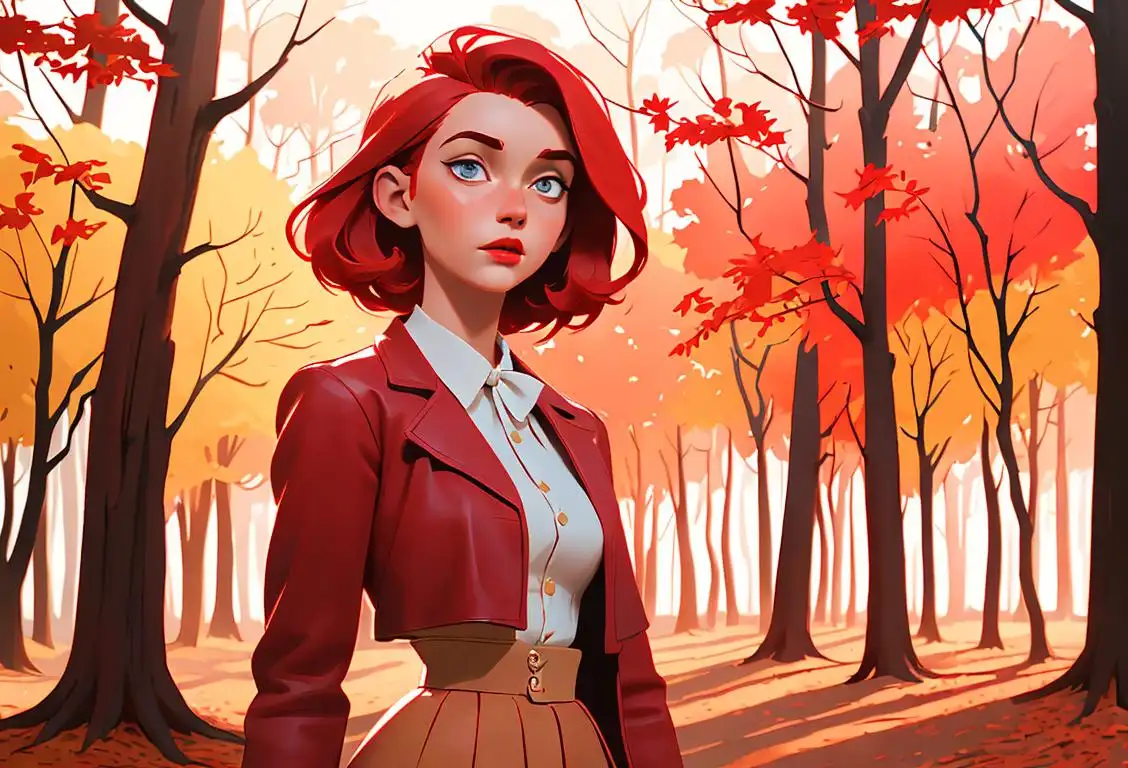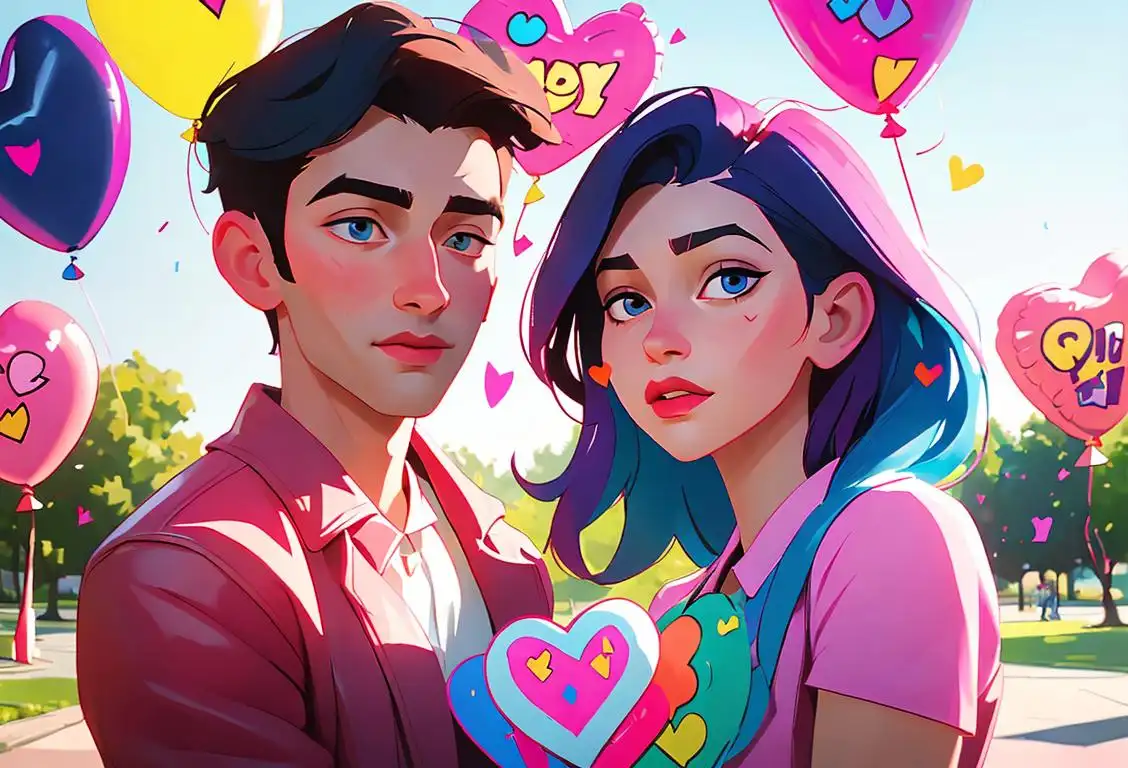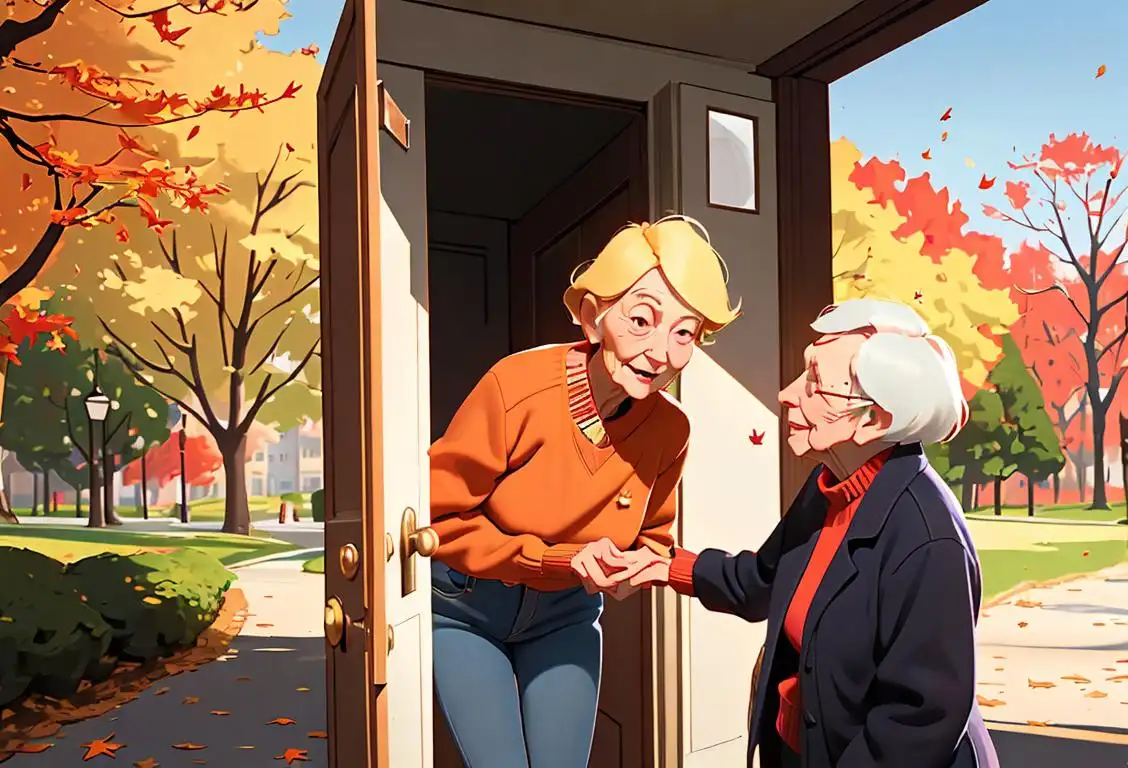National Kiss Day

Hold onto your chapsticks and get ready to pucker up, because we're spinning right into the whirlwind history of National Kiss Day! On this heart-fluttering holiday, lovers, friends, and adorably shameless grandmas worldwide come together to celebrate one of humanity's sweetest pastimes – locking lips!
When is Kiss Day?
It's national kiss day on the 13th April.
A Smooch in Time
Ah, the kiss. Ancient manuscripts show it's been around almost as long as bad breath, but it really made its mark on the internet in the 21st century. The internet went all kapow! with National Kiss Day mentions around the globe, reaching a mind-blowing peak of 90408 mentions online. Riding high on the wave of romance on the 13th of April, 2018, where it reached a peak in digital popularity.
A Day for Great Lip Service
So, what makes National Kiss Day so infectious? Maybe it's the infectious nature of endorphins released when we lock lips, or the universal language of love that a kiss speaks. Regardless of the reason, millions of people mark this day by puckering up with loved ones (or perfect strangers!).
Kiss and Make Up!
The magic of National Kiss Day isn't just for romantic buss. It's also a perfect day for reconciliation and peace - a chance to smooth over disagreements with a heartfelt smooch. Because after all, who can stay mad when there's a juicy kiss on offer?
And the Winner is...
If you're an Earth dweller with a weak spot for romance, there's no way you missed out on celebrating National Kiss Day. And if you did, don't fret! There's always next year.
History behind the term 'Kiss'
500 BC
Origins in Ancient Rome
The term 'kiss' can be traced back to the ancient Romans. During this time, the act of kissing was seen as a gesture of respect and was commonly used as a greeting among friends and relatives. The Romans had various words to describe different types of kisses, including 'osculum' for a friendly kiss and 'basium' for a more intimate kiss.
5th Century AD
Spread through Christian Culture
With the spread of Christianity in the 5th century AD, the act of kissing took on a new significance. It became associated with religious rituals and was often used as a way to show reverence or devotion. The term 'kiss' started to appear in Christian writings during this time, and the act itself became intertwined with religious practices such as the kiss of peace.
16th Century
The First Written Use of 'Kiss'
The first documented use of the term 'kiss' in English can be found in the 16th century. In 1542, the English poet Thomas Wyatt used the word 'kiss' in one of his sonnets, marking the first known written use of the term in the English language. This usage helped solidify 'kiss' as the common term for the intimate gesture.
19th Century
Popularized in Literature and Art
During the 19th century, the concept of kissing gained even more prominence in literature and art. Romantic novels, poems, and paintings depicted passionate kisses, further popularizing the act. Writers like William Shakespeare and Lord Byron often included kissing scenes in their works, contributing to the romanticization of the term 'kiss' and its cultural significance.
20th Century
Kissing in Popular Culture
In the 20th century, the term 'kiss' became deeply embedded in popular culture. It became a common trope in movies and television, representing love, romance, and desire. Iconic on-screen kisses, such as the one between Clark Gable and Vivien Leigh in 'Gone with the Wind,' solidified the powerful symbolism of the term. The phrase 'kiss and tell' also emerged during this time, referring to the act of disclosing intimate details of a romantic encounter.
Modern Era
Expressions of Love and Affection
In the modern era, the term 'kiss' continues to be a universal symbol of love and affection. It is used to express various emotions, from deep passion to a simple sign of friendship. With the rise of social media and emojis, the kiss emoji (💋) has become a playful representation of the term in digital communication, allowing people to express affection in a virtual world.
Did you know?
Did you know that a single kiss can involve anywhere from two muscles (a peck on the cheek) to 34 facial muscles (a intense French kiss)? We're getting a workout just thinking about it!Tagged
romance awareness fun loved ones reconciliationFirst identified
11th March 2015Most mentioned on
13th April 2018Total mentions
90408Other days
Kiss Day
Kissing Fried Chicken Day
Happiness Day
Suicide Prevention Month Day
Compliment Day
Kiss A Ginger Day
Love Your Red Hair Day
Iloveyou Day
Do Something Nice Day
Boyf Day
